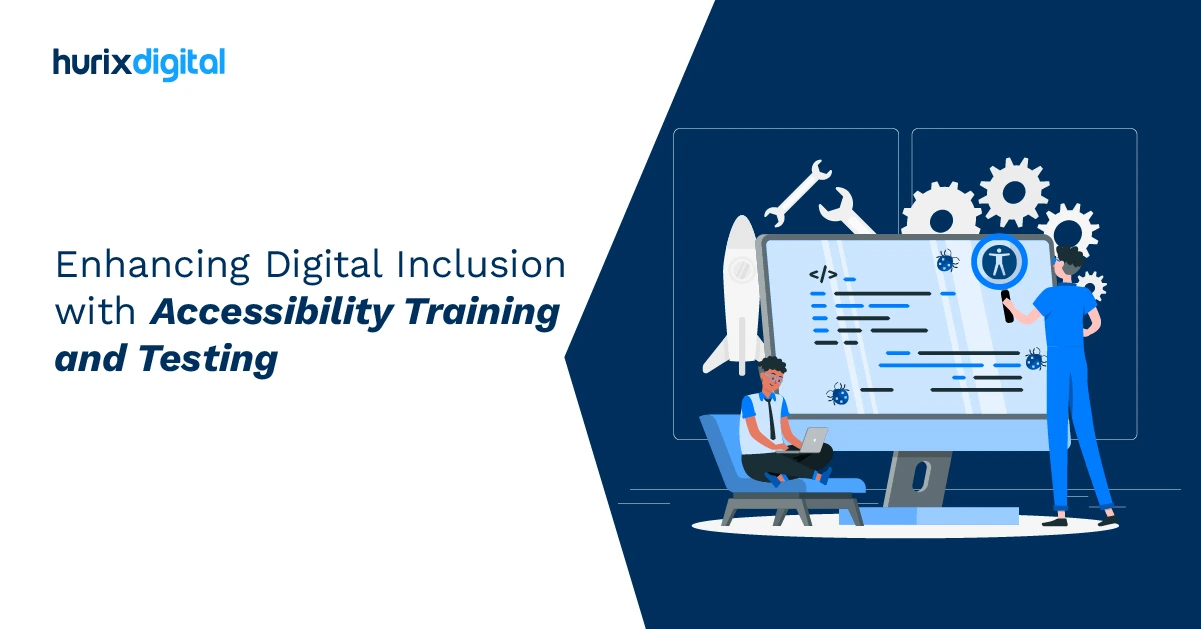
Why AI for Data Analytics is the Competitive Edge Your Business Needs Now
Summarize with:
We can often get caught up in the hype surrounding artificial intelligence (AI) and its potential consequences for our data. It’s fascinating to consider some interesting insights from large datasets. But many business leaders still have the same practical questions: How does AI really add value to data analytics? What does a good return on that investment (ROI) look like? It’s rarely smooth; many of us have learned it the hard way.
Those strange things become clearer when you dig deeper. For example, questions about data quality aren’t just things that people in academia talk about; they’re essential. AI models will fail if they don’t have accurate, clean data. This, in turn, means you cannot rely on the results completely.
Then there’s the human side of things: What new skills and ways of thinking do our teams need to really do well with AI? In the often-tricky world of data privacy and security, how do we deal with biases that could affect our important business decisions? And once an AI project is initiated, how do you even start to inculcate it across the whole company? These questions will decide who gets ahead and what new AI trends will change everything.
Table of Contents:
- How Does AI Truly Maximize Data Analytics ROI?
- What Are the Biggest Hurdles to Adopting AI in Data Analytics?
- How Critical Is Data Quality for Successful AI Analytics Deployment?
- What New Skills Are Essential for AI-Driven Analytics Teams?
- How Can We Mitigate AI Bias in Critical Business Analytics?
- What Data Privacy and Security Risks Does AI Analytics Pose?
- How to Scale AI Analytics Solutions Across Enterprise Operations Effectively?
- How Do Senior Leaders Measure AI Analytics Project Success?
- How Does AI Provide a Distinct Competitive Edge in Analytics?
- What emerging AI trends will disrupt data analytics next?
- A Final Word
How Does AI Truly Maximize Data Analytics ROI?
When people say that AI makes every dollar spent on data analytics go further, they typically mean something beyond a fancy dashboard with lots of features. The idea is much more than just a pretty dashboard. A typical company deals with tons of numbers, sales, website clicks, customer chats, and more every day.
Even the best analysts can only skim the surface of that ocean. They can find patterns, sure, but they’re innately limited by time and energy. Although they might notice an anomaly in sales last week, they fail to notice a far more subtle, critical shift that has been lurking over the past six months.
This is where AI steps in, not as a replacement, but as an extension to our collective human intelligence. It’s about achieving scale and precision that our brains find hard to cope with. Try studying every customer interaction, every support ticket, every website visit for that tiny clue that someone is about to leave. A human team would be completely overwhelmed. An AI system, however, can process those signals instantly, across millions of customers, identifying at-risk accounts with surprising accuracy. The return on investment there is immediate and tangible: proactive customer retention.
Artificial intelligence’s real magic goes beyond running reports faster or automating routine tasks. It scans thousands of datasets at once and spots patterns we might miss, like a drop in customer mood on Twitter the same week a shipment gets delayed in a regional port. AI is also good at spotting correlations between seemingly unrelated data points. So, an AI can figure out that social media sentiment trend correlates with a localized supply chain disruption. We can ask entirely new, far more insightful questions with AI. As a result, AI frees up our brightest data minds to concentrate on strategy, rather than just getting overwhelmed with large data sets.
What Are the Biggest Hurdles to Adopting AI in Data Analytics?
People usually skip right to the fun parts of using AI in data analytics, like using Copilot to find patterns or make predictions. In truth, most headaches occur at home, in places far less glamorous.
AI models, for all their cleverness, are just hungry learners. They feast on data. If that data is inconsistent, has gaps, or is plain wrong, the insights they give will also be low quality. Then there’s the talent question. Shortage of data scientists keeps making headlines. However, finding people bridging the analytical and operational divide is challenging. An AI model can answer a question by understanding the business problem, such as what a sales manager worries about at night. Making AI do that job is the main ask.
And let’s not forget trust. This is a big one. An algorithm telling an experienced executive to make a counterintuitive decision may seem unfathomable to someone who has built a career based on instinct and experience. “Why?” they ask. And the answer comes back, “Because the model, in its wisdom, determined so.” That’s where things break down. In situations where AI is a “black box,” if you aren’t able to peer inside and understand, even broadly, how it came to its conclusions, achieving adoption becomes difficult.
How Critical Is Data Quality for Successful AI Analytics Deployment?
Every leader nods when data quality is mentioned, yet budgets still flow to dashboards rather than pipelines. A useful litmus test is the “search cost”: how many messages must an analyst send before trusting a column? Data quality will strangle any AI initiative if the answer is more than two.
Why so severe, you may ask? Machine learning (ML) models are statistically robust to a bit of noise, but merciless to systemic biases such as duplicate customer IDs, silently back-filled NULLs, and shifting time zones. Once embedded in automated processes, these errors have a snowball effect. So, we were in talks with this telecom client whose self-optimizing churn model pushed retention offers to the wrong cohort because a legacy CRM table held historical phone numbers. Their marketing team had to burn their full quarter’s promotional budget to fix this.
So while AI thrives on big volumes, it performs poorly on unowned data. Datasets will remain charity guesses until they are audited, insured, and monitored like warehouses.
What New Skills Are Essential for AI-Driven Analytics Teams?
AI moves analytics beyond counting numbers to predicting what will happen next, so teams need to add new skills. The biggest must-have is data literacy. In today’s age, this means more than knowing averages; it’s more about grasping how the hidden gears of AI work. So, a smart analyst must clearly explain why a model flags a customer as high-risk, bridging tech and business.
Programming prowess in Python or R is key for customizing models. But it’s not enough; domain knowledge matters. In healthcare analytics, teams need clinicians who grasp AI outputs alongside coders.
Soft skills are important. Without help from the operations, marketing, and IT teams, AI projects fail. You can’t change your mind about being ethical. To find bias, you have to be on the lookout. Fairness audit skills stop hiring algorithms from getting unfair results. Storytelling takes numbers that are hard to understand and turns them into stories that make sense. Board members often lose interest in stand-alone insights, but a clear graphic in Tableau can make the same point more interesting.
Adaptability counts. AI evolves fast; continuous learning via courses keeps teams sharp. Edtech platforms model this, where analysts learn natural language processing (NLP) for sentiment analysis in feedback. But gaps hurt. Human intuition detects anomalies AI misses when tech is overemphasized.
How Can We Mitigate AI Bias in Critical Business Analytics?
Isn’t it fascinating? The entire discussion of AI bias. Fixing AI bias is never that easy, particularly when it comes to crucial business analytics like supply chain disruption prediction or credit scoring. Frankly, it starts with an almost philosophical question: What kind of fairness are we even aiming for? Because that’s not always straightforward.
Take the data. Everyone says, “Clean your data.” But bias isn’t a smudge you can just wipe off. It’s often baked in, historically. Imagine using decades of past performance reviews to train an AI for employee promotions. If those reviews subtly favored one demographic over another, even unconsciously, your AI will learn that preference. Our data collection lens should be critically scrutinized before we touch an algorithm. Sometimes, you might even have to, well, de-emphasize certain data points or actively seek out counterexamples to ensure fairness. It’s not perfect, it’s messy.
Then there’s the model itself. It’s not enough to just build a highly accurate predictive model. We have to ask: accurate for whom? Does it perform equally well across different customer segments? Credit risk models might be ‘accurate’ overall, but if they consistently flag more false positives for, say, a particular ethnic group, that’s more than a statistical anomaly; it’s a real issue. This entails switching to explicit fairness metrics from conventional accuracy metrics. Are we guaranteeing equal rates of error? Or equal chances? These are moral positions rather than merely technical decisions. To be honest, it can occasionally feel like diplomacy to get a team to agree on the appropriate fairness metric.
What Data Privacy and Security Risks Does AI Analytics Pose?
When we talk about AI analytics, most people imagine intelligent algorithms making things faster and more efficient. Indeed, they do. However, beneath that glossy exterior is a maze of security and privacy issues with data that keep many of us up at night.
Think about it: AI models are insatiable data devourers. They thrive on massive datasets. An algorithm isn’t just storing your online purchases, your location data from an app, or even the activity logs from your smart home device when you feed it mountains of information. It’s building connections, inferring patterns we might not even recognize. It can piece together a remarkably intimate profile of an individual, even if each individual data point seemed anonymized or harmless on its own.
Then there’s the quiet but dangerous problem of bias. Sadly, our world is packed with unfair opinions, and the facts we gather often carry those stains. When an AI learns from old records that turned away loan applicants from certain groups, it picks up that same unfair pattern and repeats it. The system simply follows the example provided, without malicious intent. The result, however, is familiar: discrimination hides behind the cool mask of an unbiased formula. We’ve watched this unfold in hiring software, court risk scores, and even patrolling practice.
Beyond that, the systems themselves are targets. A growing concern is adversarial attacks, where clever, subtle changes to data inputs can mislead AI. Imagine someone tweaking a few pixels on a stop sign just enough for an autonomous vehicle’s AI to miss it. Or injecting noise into customer data to manipulate credit scores. It’s a cat-and-mouse game, where the stakes are incredibly high. And frankly, the ‘black box’ problem, where we don’t fully understand why an AI made a particular decision, just compounds all these issues. How do you audit for privacy violations if you can’t trace the decision-making process? It feels a bit like trusting a magical oracle, doesn’t it? It is still a challenge to make these powerful tools truly transparent and accountable
How to Scale AI Analytics Solutions Across Enterprise Operations Effectively?
Scaling AI analytics… you’ve probably run across that line at least once this week. Most people picture massive servers or fancy algorithms, but the real work happens in day-to-day connections inside the business. To make an intelligent program genuinely useful to every team, we first have to spot all the moments where people interact with the data.
The data itself is one of the first things that trips everyone up, almost every time. You make a great model in a clean, well-organized sandbox and try to use it in the real world. Out of nowhere, you’re in a messy sea of inconsistent identifiers, missing values, and data sources that haven’t talked to each other since the last millennium.
Then there’s the model itself. Developing one is one thing; keeping it humming, accurate, and relevant in a dynamic business environment. That’s a whole other ballgame. Think of it: a model trained on last year’s customer behavior might totally miss the mark today because markets shift, preferences change. You need a disciplined way to monitor its performance, to retrain it with fresh data, perhaps even to retire it gracefully when it’s truly past its prime. This becomes a lifelong journey, an ongoing commitment that loops through observation, adaptation, and refinement. Honestly, it often feels more like parenting than engineering sometimes. You’re constantly nurturing, correcting, and setting boundaries.
How Do Senior Leaders Measure AI Analytics Project Success?
How do you know AI is worth it? It’s not just gut feel. CXOs need numbers. Start with goals: Is your organization chasing revenue, efficiency, or learner satisfaction? Tie AI to that. If it’s satisfaction, track course ratings pre- and post-AI. Hard data beats hunches.
Model accuracy’s a clue too. If AI predicts dropouts with 95% precision, that’s gold. Time matters. How fast does it pay off? A quick win, like cutting report time from days to hours, builds faith. Cost savings? Tally it, fewer staff hours, less waste.
But here’s the rub: adoption. If your team won’t touch it, it’s a bust. Ask them with surveys or chats. A retailer once bragged about AI boosting sales, but the real metric was staff using it daily. Mix these things together: goals, accuracy, speed, savings, and buy-in. You’ve got a yardstick. If you miss one, you’ll have to guess.
How Does AI Provide a Distinct Competitive Edge in Analytics?
AI’s edge comes from genuine speed and smarts. It operates in real-time. Edtech providers can tweak courses as learners engage, not months later. Traditional analytics lags behind. AI keeps pace. That gives you a serious leg up.
It digs deeper, too. Patterns in data, say why rural students lag, pop out with AI where humans squint. One competitor might spot a trend and pivot while you’re still charting. Prediction’s the kicker: AI flags what’s next, not just what was. A rival could grab market share while you’re reacting. Personalization scales with AI, tailored learning paths for thousands, not dozens. And automation? It frees your team for big-picture thinking.
What emerging AI trends will disrupt data analytics next?
When people talk about the future of data analytics, the conversation quickly turns to a big change in not only how insights are found, but also in who or what does the initial heavy lifting. This change goes beyond making dashboards bigger and more complicated. It gives smart entities the power to find their own way through the data landscape.
Take data preparation, for instance. Every data professional has spent hours, often days, wrestling with messy, inconsistent data for decades. But imagine a future, very near, where an analyst simply tells a generative AI model, “Cleanse this customer transactional data, find the inconsistencies in shipping addresses, and then normalize product categories across these three disparate legacy systems.” And it just… does it without getting into those rigid rules. This capability could even extend to synthesizing entirely new, privacy-preserving datasets that mirror real-world distributions for testing new models, all without touching sensitive customer information.
Autonomous artificial intelligence agents are on the rise. We’re moving beyond AI as a static tool that just answers pre-defined queries, to AI that asks its own questions, designs its own analytical paths, and even learns from its own findings. Picture this: an AI agent, given a business problem like “Why are our subscription cancellations rising in Europe?”, doesn’t just pull a pre-configured report. Different data sources can be independently queried to identify correlations, hypothesize causes, and even suggest data experiments to validate the hypotheses.
A Final Word
The questions explored here go beyond theoretical—they represent the real challenges keeping leaders awake at night. Whether you’re wrestling with messy data pipelines, wondering if your team has the right skills, or trying to figure out how to measure AI’s actual impact, you need a partner who’s been there before. Hurix Digital brings practical experience from working with enterprises across industries, helping them transform raw data into a competitive advantage without getting lost in the hype.
Connect with us to explore how we can accelerate your AI analytics transformation.
Summarize with:

Vice President – Content Transformation at HurixDigital, based in Chennai. With nearly 20 years in digital content, he leads large-scale transformation and accessibility initiatives. A frequent presenter (e.g., London Book Fair 2025), Gokulnath drives AI-powered publishing solutions and inclusive content strategies for global clients
 Upcoming Masterclass | Build an Army of Brand Evangelists using Training & Development | November 20th, 8:30 AM PDT | 11:30 AM EDT | 10:00 PM IST
Upcoming Masterclass | Build an Army of Brand Evangelists using Training & Development | November 20th, 8:30 AM PDT | 11:30 AM EDT | 10:00 PM IST




